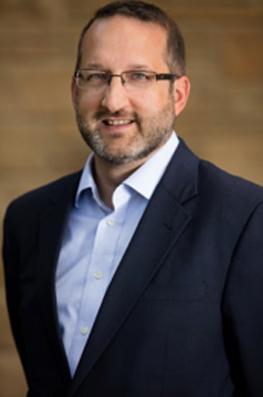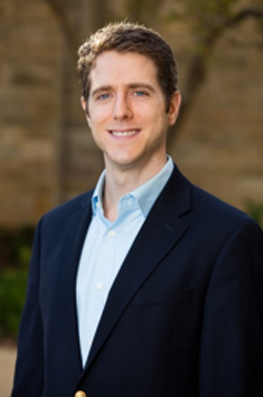In this series, David Lapidus talks with members of the Rare Collective to debunk common myths surrounding rare diseases. In this post, Doug Paul talks about the challenges that orphan drugs face after regulatory approval.
David:
Doug, you’ve helped manufacturers commercialize dozens of orphan drugs by designing and implementing strategies for pricing and reimbursement. What kinds of misconceptions do manufacturers have about the post-approval world?
Doug:
Some drug-makers are so focused on securing regulatory approval that they forget this simple fact: approval is necessary for commercial success, but it’s not sufficient. There are at least four hurdles that come after approval, and a product might become a commercial failure if the developer isn’t prepared to deal with them. First, there must be a reason for patients to try your product. Second, payors may not manage usage in your favor. Third, payors must accept your price. And fourth, funding must exist at the local level.
David:
These sound like issues that arrive relatively late in drug development.
Doug:
They become visible problems at a later phase, but they can often be avoided by laying the right groundwork long beforehand—during clinical development. We engage with our clients at Phase 2 or sometimes earlier, when we can provide clarity about what kind of trial endpoints are needed to demonstrate value to the payors, both US and ex-US. If we connect at an earlier phase, it’s possible to make decisions that improve the product’s impact on unmet need or reimbursement, for example by researching different modes of administration or even vial sizes. And of course, it’s important to design strategies that minimize payor barriers like step-edits and prior authorization. Regulatory approval is a big win, but there are other battles to fight before you can achieve commercial success.
David:
Let’s talk more about the specifics of those other battles. The first two “hurdles” that you mentioned seem to deal with unmet need. How do you think about this for orphan drugs?
Doug:
Start by asking why patients would want to try your product versus the alternatives, including no treatment. If your clinical trials merely show non-inferiority to standard of care, then you lose the chance to make an efficacy or safety argument. But an even deeper question is whether patients actually need treatment. For many rare diseases, the need is obvious. But the orphan drug market is maturing, and we’re seeing companies that develop drugs without rigorously examining how the disease affects patients. Rarity isn’t enough to make an orphan drug successful. Sometimes this issue is subtler than the overall disease picture, and it relates to your areas of expertise: disease segmentation and market forecasting. Sound familiar?
David:
Yes, I see the connection. I’ve worked on plenty of cases where the company’s initial estimate of market size failed to consider the range of disease severity. It might be easy to measure the mutation frequency of a genetic disease, but patients with mild phenotypes might not want to deal with an infused drug or side effects. Lysosomal storage disorders are a great example of this. That’s why it’s important to understand the disease’s epidemiology before committing to a revenue forecast.
Doug:
That’s right. And even if the patients are there, and your drug is a good match for them, you can’t assume that the payors will help you win over those patients. If the target disease already has an accepted standard of care, payors probably won’t force doctors to switch to your new product. This is true even if the old standard of care is used off-label.
David:
I can see why payors wouldn’t be moved by a non-inferiority argument, or even marginally better efficacy, but what if a new orphan drug is actually cheaper than the old standard of care?
Doug:
You mentioned that the lysosomal storage disorders (LSDs) are good example of the need to think about severity, and LSDs also show that a lower price-per-patient might not motivate payors. Some of the LSDs have become competitive markets with products whose major differentiator is price. But these diseases are so rare that even a 30% discount doesn’t motivate many US payors. It isn’t worth their effort to run a management program that would direct patients to a lower-priced product.
David:
That’s interesting, but it sounds like it contradicts your third point: you can’t be commercially successful unless payors accept your price. If these diseases have such a low budgetary impact, why would payors argue over a high-priced ultra-orphan drug?
Doug:
It’s all about having a global view. Or at least about knowing when you need to take a global view versus when you can focus on the US or other key markets alone. European payors are much more careful about measuring the value of a drug. They’ll ask how much it actually improves patients’ lives, and whether that’s reflected in the price. For example, if the French authorities decide that the product isn’t a big improvement—maybe it hasn’t demonstrated good efficacy, or maybe it isn’t much better than an existing product. So our clients might find that higher price points are not available to them in France. Of course that impacts other countries’ prices via international reference pricing. So European prices can be much, much lower than US prices. In some cases, this process links the price of a new orphan drug to a much older, much cheaper drug that might even be used off-label. And there are some cases where the new drug wins regulatory approval, but it never becomes commercially available essentially because the manufacturer and the payor can’t reach agreement on a price.
David:
How can a drug-maker react to this kind of restriction?
Doug:
You must understand how your product will be received by decision makers in multiple economies. That requires knowing the competitive landscape, your own product profile, and European payor behavior. If you face potential restrictions and price concessions, you’ll need to adjust your “recipe” for commercialization. In some situations, think of it like making a cake. The European markets are sometimes the icing and other times the cake. The specifics of some product’s “recipe” may require more focus on the US to ensure sustainable revenues.

Doug Paul is a VP & Partner of MME, and has developed pricing and access strategies that reflect the true value of therapies around the world.




 RARE COLLECTIVE® is a trademark of Rare Collective, LLC.
RARE COLLECTIVE® is a trademark of Rare Collective, LLC. 